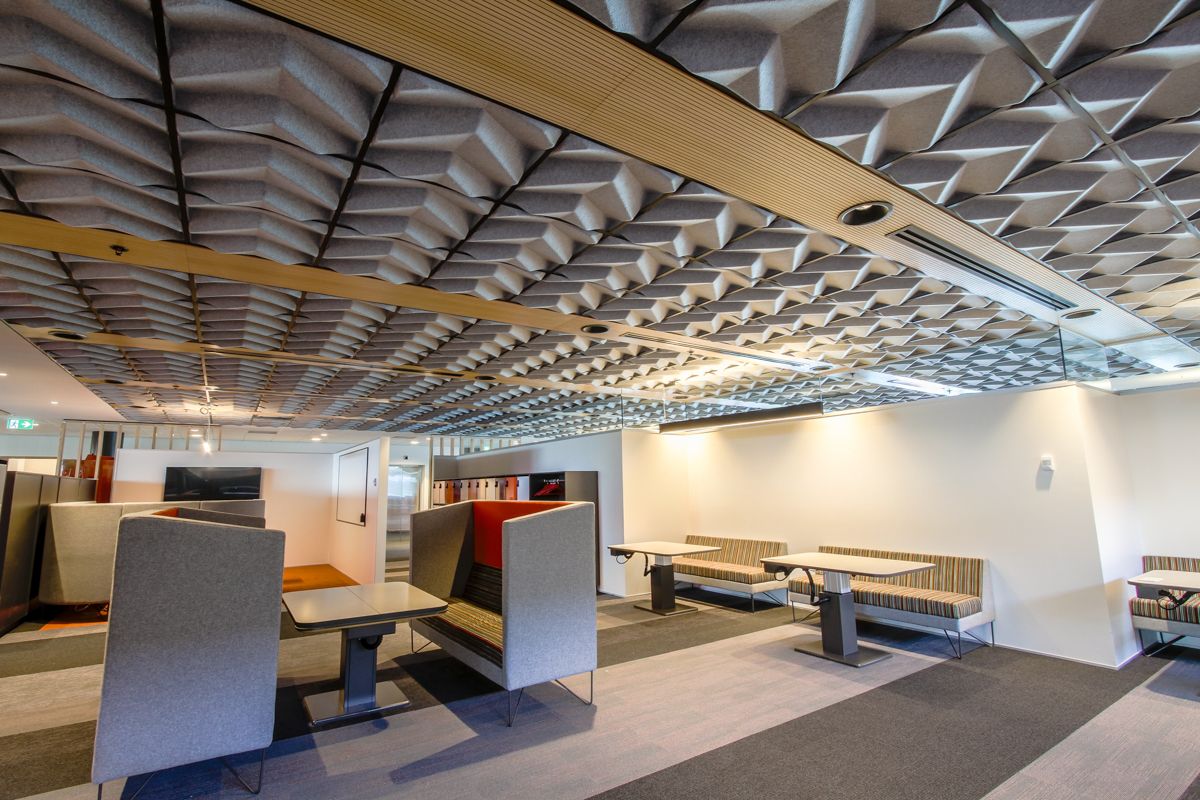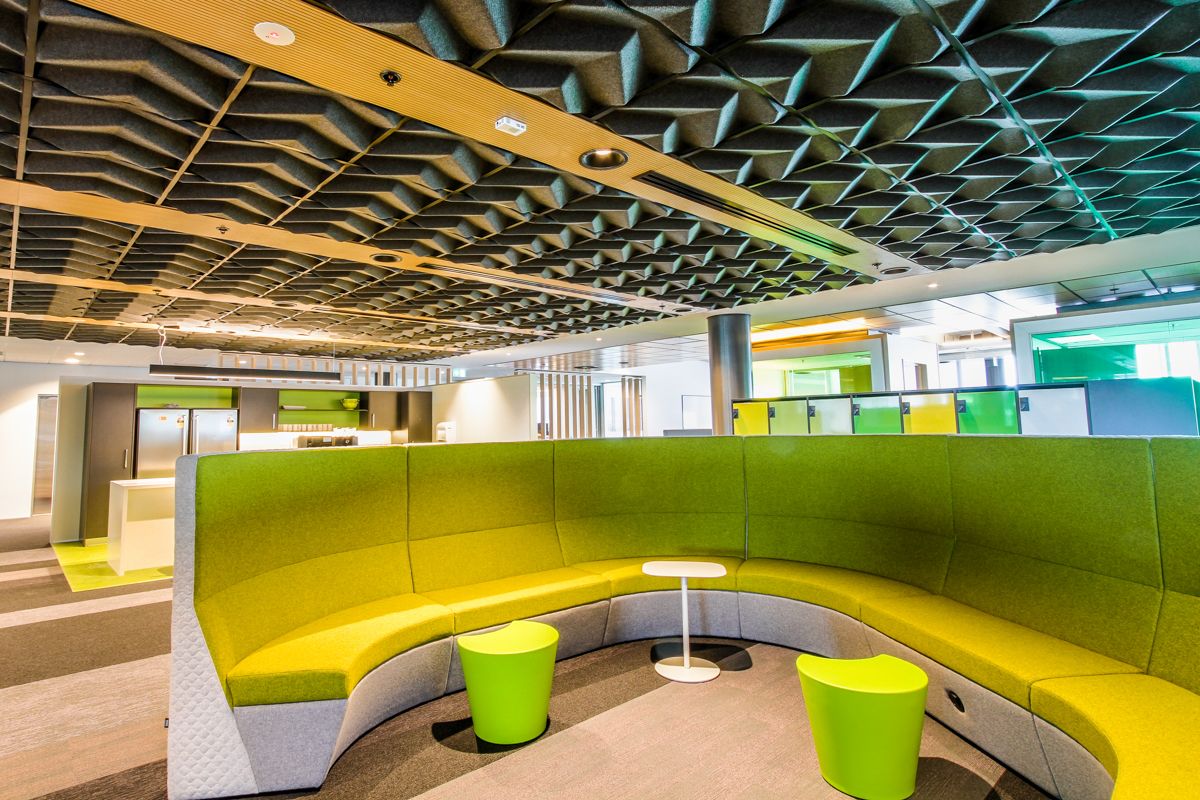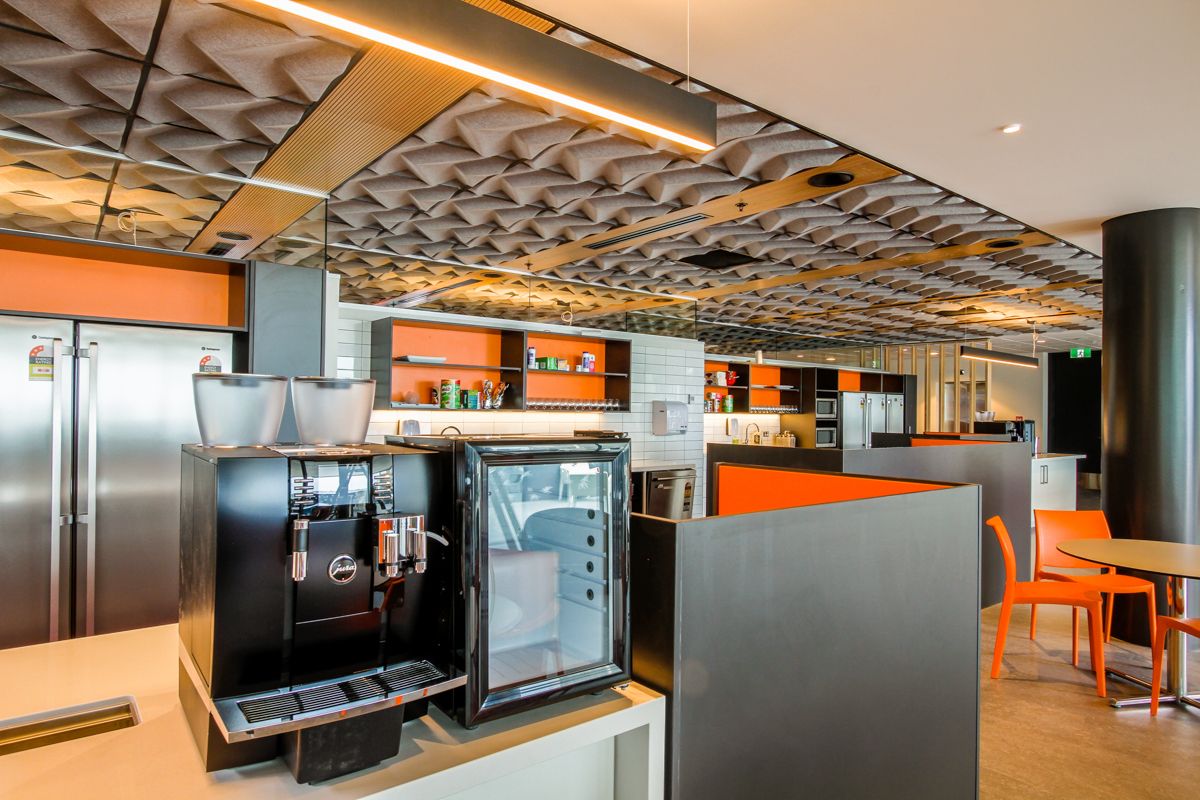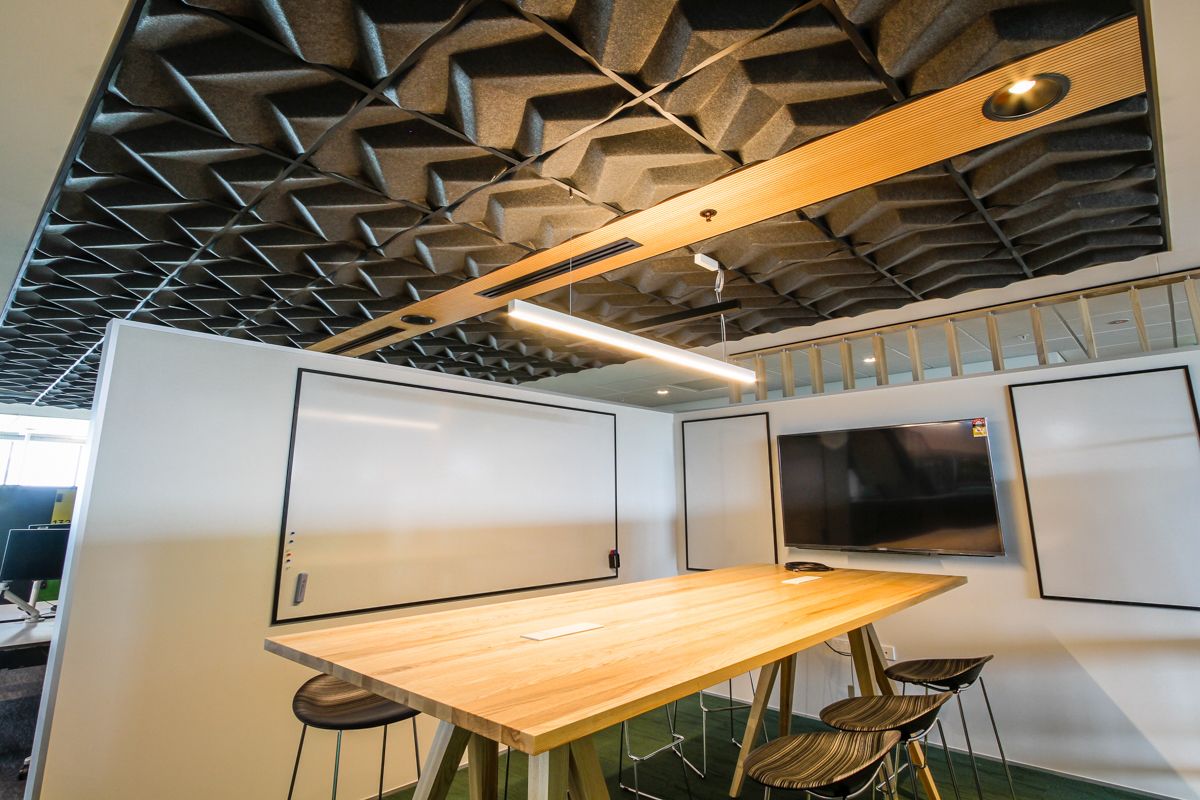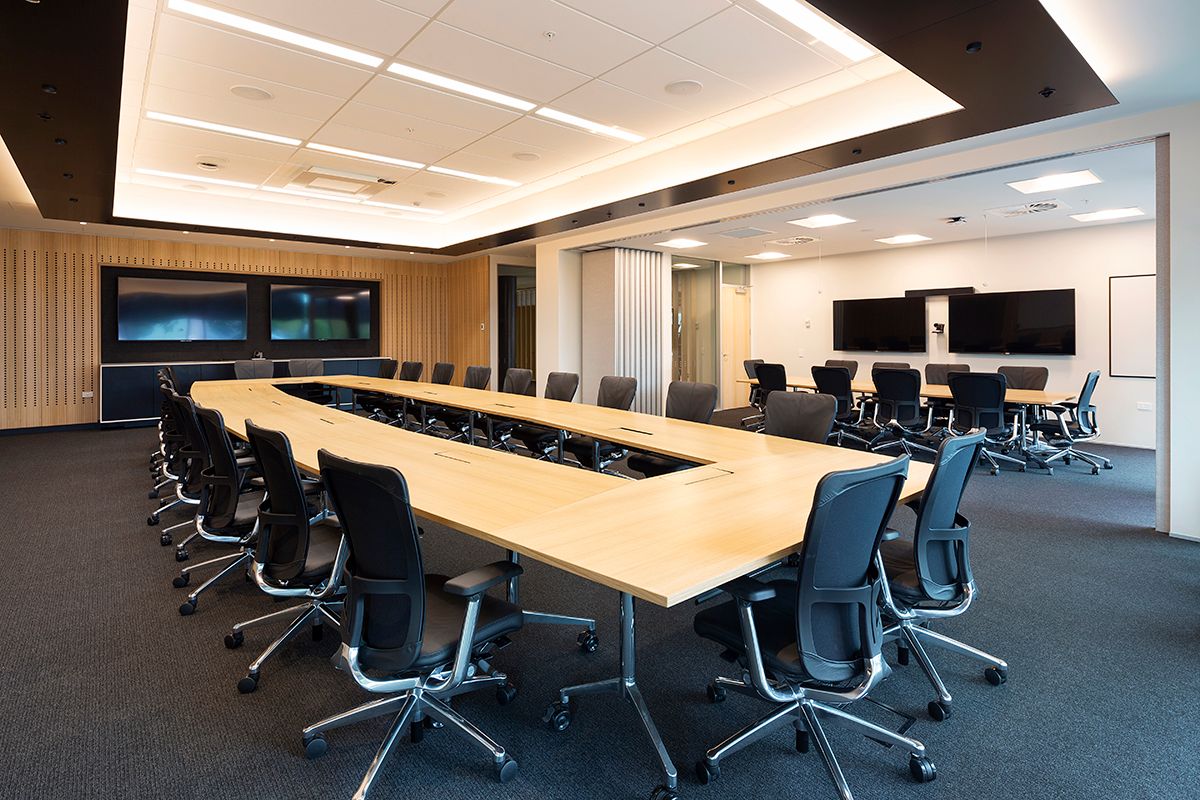Trustpower
Much of the headquarters for Trustpower in Tauranga has an open plan layout, and the potential problems caused by acoustic reflections and high reverberation times in such a large space needed careful consideration. 3D polyester ceiling tiles reduce reverberation while providing a unique and dynamic look.
Much of the new headquarters for Trustpower in Tauranga has an open plan layout, and the potential problems caused by acoustic reflections and high reverberation times in such a large space needed careful consideration. This called for an innovative acoustic solution. Warren and Mahoney collaborated with T&R Interior Systems, to design a chevron pattern that was made to fit into a standard two way black suspended CBI grid. The tiles are unique because the pattern drops below and sits above the grid line to create a dynamic ceiling that catches the light on its peaks.
Background noise created by multiple people talking is a sound that many listeners encounter on a regular basis. It is therefore seen to be an excellent masking technique in an office environment, because it has the same acoustic properties as the ‘nuisance’ and can be used to cover (hide) unwanted speech stimuli. This technique, also known as acoustic babble is the driving concept in the acoustic design of the Trustpower building. Voids in each floor plate create a central atrium, where sound is not absorbed, but rather broken up by the use of battens. The extensive use of timber enables an acoustic liveliness and warmth, and the sound generated in this social space travels out from the atrium to the floor plates. The traditional working areas are set back from the atrium and freestanding glass meeting rooms create solid blocks to act as a perforated acoustic buffer. Circulation and social spaces around the atrium have a bespoke polyester ceiling (3D Polyester panels) while the loftier ceilings above the desks have Novahush absorber panels behind exposed services. As these ceilings both have a high Noise Reduction Coefficient they do not reflect sound generated in the space itself. Encouraging spatial decay and covering speech activity with acoustic babble allows for conversations to take place without the whole open plan office being aware of what has been said. This is an effective acoustic technique to encourage a collaborative working environment.
Products
